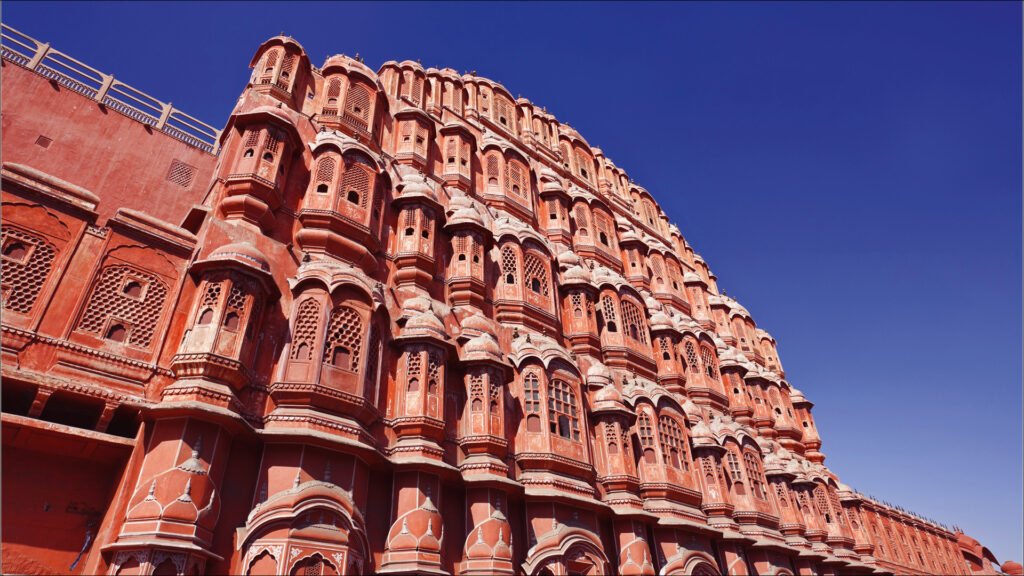Jaipur, known as the Pink City, is a vibrant tapestry of history, culture and architectural wonders. Founded by Maharaja Sawai Jai Singh II in 1727, Jaipur is India’s first planned city, designed according to Vastu Shastra, the ancient Indian science of architecture. Let’s embark on a journey to know the Exploring the rich history of Jaipur.
Looking For Top Call Girl in Jaipur? Check the List of Must Try Restaurants and Street Food in Jaipur.
1. The Birth of Jaipur
Maharaja Sawai Jai Singh II, the ruler of Amer, envisioned Jaipur as a well-planned city that could accommodate the growing population and ensure security from invasions. With the help of architect Vidyadhar Bhattacharya, Jaipur was carefully designed with wide roads, large public squares and a grid-like pattern, making it one of the earliest planned cities in India.
2. The Pink City
Jaipur received the nickname “Pink City” in 1876 when the city was painted pink to welcome the Prince of Wales (later King Edward VII). The pink color, a symbol of hospitality, became the permanent identity of Jaipur. The tradition continues, and areas of the old town are adorned in the iconic pink colour.
3. City Palace: A Regal Abode
The City Palace, a vast complex of courtyards, gardens and buildings, stands as a testament to the grandeur of Jaipur’s royal heritage. The palace, which is still home to descendants of the royal family, houses museums displaying royal attire, armory and artefacts. The blend of Rajput, Mughal and European architectural styles makes it a fascinating site to visit.
4. Hawa Mahal: The Palace of Winds
Built by Maharaja Sawai Pratap Singh in 1799, Hawa Mahal is an architectural marvel with its unique five-storey façade that has 953 small windows or ‘jharokhas’. This elaborate design was intended to allow royal women to observe street festivals and everyday life without being seen, while adhering to the strict purdah system.
5. Jantar Mantar: A Celestial Observatory
Recognized as a UNESCO World Heritage Site, Jantar Mantar is an astronomical observatory built by Maharaja Sawai Jai Singh II. It houses the world’s largest stone sundial and various instruments designed to measure time, track celestial bodies, and observe astronomical phenomena. The site reflects the Maharaja’s scientific and scholarly inclinations.
6. Amber Fort: A Majestic Fortress
Situated on a hilltop overlooking Maota Lake, the Amber Fort is a stunning blend of Hindu and Mughal architecture. Built in the 16th century, this fort has intricate carvings, huge courtyards and beautiful gardens. The Sheesh Mahal (Mirror Palace) within the fort is particularly famous for its exquisite mirror work.
7. Nahargarh Fort: The Abode of Tigers
Perched on the Aravalli hills, Nahargarh Fort offers a panoramic view of Jaipur. Built in 1734, the fort served as a retreat for the royal family. The fort’s name, meaning “Abode of Tigers,” is derived from the local belief that it was haunted by the spirit of a prince named Nahar Singh Bhomia.
8. Jaigarh Fort: The Fort of Victory
Jaigarh Fort, built in 1726 to protect the Amer Fort, houses the Jaivana, the world’s largest wheeled cannon. The strong architecture and extensive water storage system of the fort reflects its strategic importance and engineering excellence.
9. Albert Hall Museum: A Cultural Extravaganza
Located in the Ram Niwas Garden, the Albert Hall Museum is the oldest museum in Rajasthan. The Indo-Saracenic architecture of the museum is as impressive as its vast collection of artifacts, including paintings, jewelry, textiles, and pottery, showcasing Rajasthan’s rich cultural heritage.
10. Jal Mahal: The Water Palace
Jal Mahal situated in the middle of Man Sagar Lake is a beautiful example of Rajput and Mughal architecture. Although only the upper floor is visible above the water, the palace creates a mesmerizing sight, especially during the monsoon season when the lake is full.
Conclusion
The rich history of Jaipur is a captivating journey through time, offering a glimpse of the city’s royal past, architectural splendor and cultural richness. Each monument, fort and palace tells the story of a bygone era, inviting visitors to step back in time and experience the grandeur of the Pink City. Whether you are a history lover or a curious traveller, Jaipur promises an unforgettable exploration of India’s royal heritage.

[…] Are You Looking For Top Call Girl in Jaipur? Embark on a Journey to Know the Exploring the Rich History of Jaipur. […]